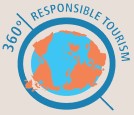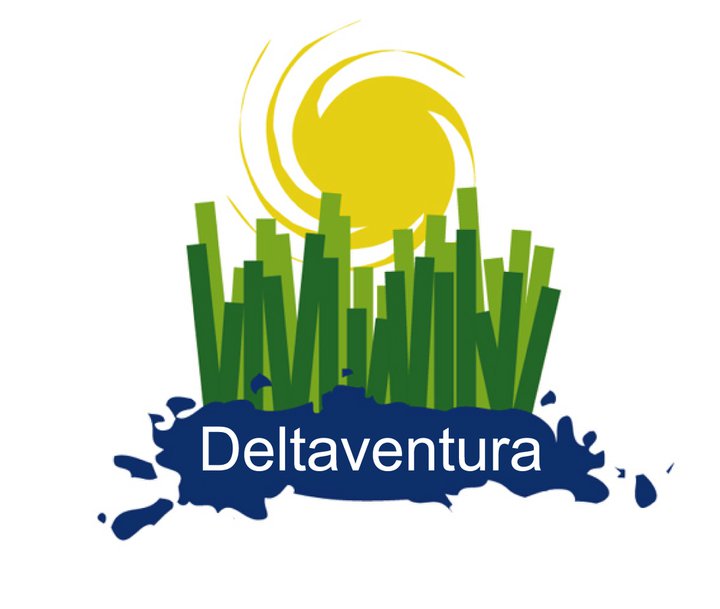
Peninsula Valdes
An obligatory stop for anyone traveling along the Atlantic Coast of Argentina is the Peninsula Valdez, located in the province of Chubut. This area is famous for its Southern Right Whale Sanctuary. This fauna reserve was declared a Whale Sanctuary by the International Whale Commission and was given Humankind Patrimony by the United Nations in 1999. The massive Right Whales return to Patagonia every year to breed and the sight is awe-inspiring. A variety of other spectacular marine-life is prevalent here and can be seen on many of the peninsulas wide beaches including penguins, sea lions, elephant seals, killer whales and a number of bird species. The peninsula is linked to the coast by a strait of land bathed by the ocean. The yellowish, arid terrain spectacularly contrasts with the turquoise ocean. The only urbanized area on the peninsula is the town of Puerto Piramides, strategically located right over the Nuevo Gulf and protected by natural reefs that shelter the marine fauna. Due to this location, tourists are able to see the whales right from the beach. The town of Puerto Piramides is entirely dependent on the eco-tourism industry.

Puerto Piramides and the “Administradora” of Peninsula Valdes
Puerto Piramides is the only “urban” village of Peninsula Valdes Reserved Area. The peninsula, praised for its flora and fauna, was declared in 1994 as a whale sanctuary by the International Whale Commission, and more recently it was declared World Heritage Site by UNESCO. As a result, the Peninsula has developed tourist activities including whale watching and observing other marine mammals. The majority of the peninsula territory and park is private. Nearly all tourists stop in Puerto Piramides to embark on whale watching excursions and other aquatic adventures, to eat or visit the beach, and to buy souvenirs.
As the only town in Peninsula Valdes, the construction of large buildings and other infrastructure along the coast will have a devastating impact on the ecosystem in the present and near future.Fortunately, civil society groups have had an active role in bringing attention to the towns development and its impact. They advocate for balance between the environmental and social changes in the area.
Even though the town is small and the infrastructure is limited, this does not eliminate the risk of negatively impacting the environment because of the abundance of tourists that flock to Puerto Piramides in large numbers during high season. The town itself and Peninsula Valdes are impacted not only by the towns activities and but also the surrounding Patagonia region as well.
As a result of the demand and arrival of tourists, the town of Puerto Piramides faces issues and concerns regarding the care and treatment of solid and liquid residues, the use of resources and services such as water and electricity, and the poor management of trash collection and removal.
Furthermore, the economic activities of the region, such as the fishing factories and aluminum factory in Puerto Madryn, also heavily challenge the environment. For example, the entire region is confronted by the management and relocation of the municipal landfill, determination of the capacity of the regions Protected Areas, and collecting and processing of sea algae.
Consequently, these issues create large amounts of contamination and destroy the fragile ecosystems, like those in Peninsula Valdes. It is imperative that policies are drafted and enforced that will implement a plan to protect Peninsula Valdes and will work towards resolving many of these environmental issues.
While the population of Puerto Piramides experiences the firsthand effects of these challenges, the authorities and decision makers responsible to handle these issues and the future development of tourism represent many different interests up to the larger province of Chubut. As a result, their decisions and policies do not always adequately and effectively favor the interests of the inhabitants and environment of Peninsula Valdes.
In 2001, the Administration of the Protected Natural Area of Peninsula Valdes was established, but they were unable to provide or implement a sufficient solution. The administration was made up of three independent braches: the Assembly, the Executive Branch, and the Technical Advisory Board.
Among the branches, the Executive branch possesses the administration and management powers as well as manages the board of directors. Four members represent the branch. They represent respectively the Provincial Department of Tourism, the rural landowners within the protected area of Peninsula Valdes, the urban landowners of Puerto Piramides, and a representative of the Assembly. The representative of the Provincial State serves as the President of the Executive Branch and the Administrations official office is based in Puerto Madryn. Furthermore, it was established that 50% of the total funds collected by the Administration for Peninsula Valdez admission fees is redistributed to the other protected areas of Chubut.
The lack of majority representation of inhabitants of Puerto Piramides in the Administration impedes them to play the appropriate and adequate role in the management of their own land and natural resources. Nevertheless, it should be recognized how the inhabitants of Puerto Piramides are truly invested in the future of their land and the environment. As a result, they bring hope for the future and the dedication to find an appropriate solution to the challenges they face. The local government and local inhabitants work together to remedy these challenges and conserve their natural resources for future generations.

The South Atlantic Right Whale
This species is one of the eleventh largest in the world. The whale is toothless and therefore it wont bite! Instead of teeth, the whale has something which can best be described as a beard that it uses to filter plankton, its main food source. The whale breathes through two holes located on its head and has an almost entirely black body. Distinctive white markings located on the abdomen and calluses on the head enable scientists to identify individual whales. The whales reside along the Peninsula Valdez from June to October, the period in which they give birth and find a mate. As is the case with many of the great species on this planet, the Right Whale is endangered and the entire population is estimated to be no more than 5000. In Argentina, the province of Chubut has instituted strong programs to protect the surviving whales and the National Congress has declared the whale a Natural Monument. Strict regulations ensure that only authorized vessels can give tours and also denote fixed areas where the whales can be approached. Notwithstanding these regulations, the activity is still intrusive and the local area is affected by a heavy seasonal influx of tourism which impacts the very fragile environment.

Penguins
Our tours to the Patagonian coast focus on five most exciting sites located between Río Gallegos and Península Valdez — Punta Tombo, The Reserve of Cabo dos Bahías, the Penguin Island (National Marine Park in front of Puerto Deseado), Puerto San Julián and the Monte León Park. These locations dazzle visitors with their colorful landscapes and large colonies of penguins, other birds and marine mammals that can be observed.
Two species of penguins can be seen at these sites: The Magellanic penguin and the Yellow Crest penguin. The penguin colonies mate between the months of October and February. Females lay the eggs in early October and in mid-November the eggs begin to hatch. This is when both the male and the female defend the nest, alternating their trips to search for food for their offsprings. In February, the chics change their plumage and begin to approach the sea. In March, the penguins begin their sea migration south.

Coastal Marine Park (Parque Marítimo Costero)
In 2008 the Congress approved the creation of the Inter-jurisdictional Coastal Marine National Park Patagonia Austral, the first of its kind in the country. The protected area stretches from Bahía Camarones in the south to the the Golfo San Jorge in the north. The park has over 100 km of coastline, 42 islands, 500 km2 of sea and seabed, and has subsoils of great ecological diversity. The reserve contains half a million birds of 13 various species such as Magellanic penguins, the giant petrel of the south, the imperial cormorant, the black-necked cormorant, the biguá, the southern kelp gulls and the Olrog, the South American Terns with bright yellow beak (?), the common and the Chilean escúa, among other species.
The creation of the Inter-jurisdictional Park aimed primarily to maintain the balance of the terrestrial, coast and marine ecosystems, protect the landscape, cultural and natural heritage, and foster and facilitate the research and environmental monitoring, as well as act as major tourist attraction for the province.

Monte Leon National Park
The land of the park was donated in the year of 2002 to the Government by the Argentinean Wildlife National Foundation (Fundación Vida Silvestre). The park is located in the southeast of the province of Santa Cruz, between the National Route 3 and the sea coast, 210 km north from Río Gallegos. The park has about 32 kms of beaches, high cliffs, islands, bays and sandbanks. Its biodiversity registers 68 species of birds, 4 reptiles and 20 mammals. In the steppe zone there are guanacos and rheas. The Magellanic penguins are also present here and represent the fourth most important breeding colony of the country.
The very diverse and rich ecosystem of the park includes the Patagonia steppe and the sea. These protected areas are a home to sites of paleontological and archaeological importance and value.



